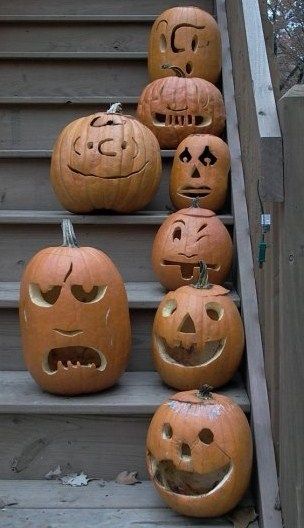Jack-o-Lanterns weren't always pumpkins
Summary: The Jack-o-Lantern is symbolic with Halloween. Weve been carving pumpkins for centuries and legend has it, it is because of an old Irish myth steeped with evil. Todays Halloween celebrations have less to do with evil and more to do with fun but the tradition of the carved Jack-o-Lantern continues on.
Pumpkins are native to the Americas and have been growing here for more than five thousand years. Native Americans used pumpkins extensively for food and fiber and shared this versatile and nutritious plant with immigrants.
Today pumpkins are grown all over the world for various uses. Antarctica is the only continent where pumpkins cannot grow.
What we know as a Jack-o-Lantern today has not always been so. The carved pumpkin did not come in to use as a Halloween decoration until the after the 1880s. Irish immigrants began coming to America in the 1840s and brought their traditions with them. Prior to that, pumpkins were symbolic of harvest time to those that settled in the new world.
In Ireland, turnips and potatoes and were used to make Jack-o-Lanterns but not for mere decorations. They were used to scare away evil spirits. The centuries old Irish myth of Stingy Jack might be the origin of what eventually developed into our modern Halloween tradition of the Jack-o-Lantern.
The practice originated from an Irish myth about a man nicknamed "Stingy Jack." According to the story, Stingy Jack invited the Devil to have a drink with him. True to his name, Stingy Jack didn't want to pay for his drink, so he convinced the Devil to turn himself into a coin that Jack could use to buy their drinks. Once the Devil did so, Jack decided to keep the money and put it into his pocket next to a silver cross, which prevented the Devil from changing back into his original form. Jack eventually freed the Devil, under the condition that he would not bother Jack for one year and that, should Jack die, he would not claim his soul. The next year, Jack again tricked the Devil into climbing into a tree to pick a piece of fruit. While he was up in the tree, Jack carved a sign of the cross into the tree's bark so that the Devil could not come down until the Devil promised Jack not to bother him for ten more years.
Soon after, Jack died. As the legend goes, God would not allow such an unsavory figure to enter into heaven. The Devil, upset by the trick Jack had played on him and keeping his word not to claim his soul, would not allow Jack into hell. He sent Jack off into the dark night with only a burning coal to light his way. Jack put the coal into a carved out turnip and has been roaming the Earth with it ever since. The Irish began to refer to this ghostly figure as Jack of the Lantern, and then, simply Jack-o-Lantern.
There are various versions of the Irish myth that have been handed down all similar in content that certainly play a role in the traditions now common to those of us that celebrate Halloween.
Halloween has a storied past and is celebrated in more countries around the world than ever before. In America it took some time for Halloween to be celebrated on a national level. Today Halloween is the second largest commercial holiday in the nation.
Costumes and candy and being scared were never so much fun as they are on Halloween. Carving a Jack-o-Lantern is a tradition that continues to thrill young and old. It isnt surprising to see community pumpkin carving contests this time of year or parents teaching little ones how to safely carve a pumpkin.
Pumpkin carving reaches far beyond the traditional scary face these days. The pumpkin has truly become an artists medium with painstakingly detailed carvings on multiple levels of flesh to the delight of the viewers.
Although we are no longer trying to ward off evil spirits like Stingy Jack, there is a certain charm in seeing the familiar and sometimes haunting glow coming from a Jack-o-Lantern on the front porch in the fall.

